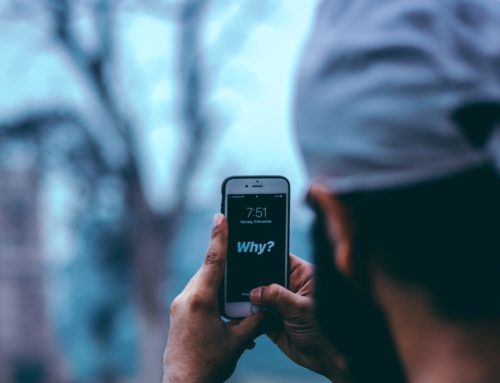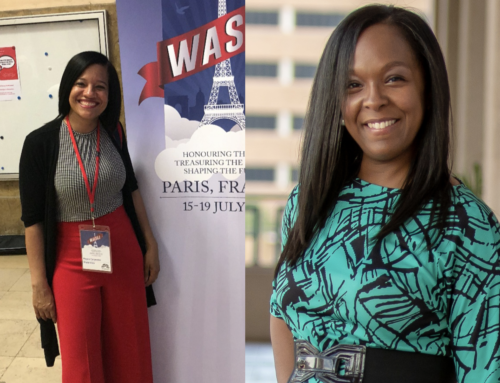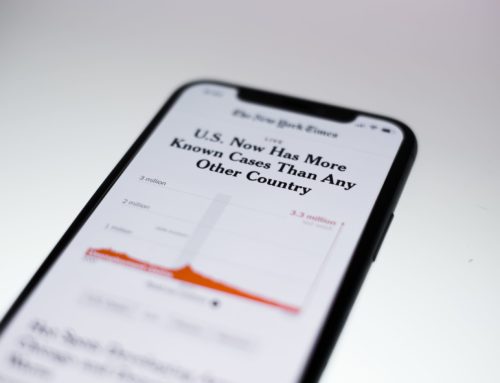Ted Baran: Law Enforcement Officer, Interpreter, CODA, Advocate
Ted Baran, NIC, Gallaudet DPS Director
Julia Wardle: Can you tell us about your upbringing, your exposure to the Deaf community?
Ted Baran: My exposure to the Deaf community started in 1988, when I started working at the American School for the Deaf (ASD). I was working in the PACES program, a program at ASD for students that required one-on-one attention. These students occasionally needed services from the police; when we called in the police, I was struck by their inability to communicate, and how they could not serve these individuals. As I observed this, I realized that I could become a police officer, and serve as a bridge between the law enforcement and Deaf communities.
I have been involved with the Deaf community in the Hartford area since I was a small boy. I’m a CODA, both of my parents (Al and Susan Baran) attended ASD. My uncle, Frank Marcil, also attended ASD. So, by growing up there, I was already close to many members of the Deaf community. When I started working there, I was constantly being told, “Oh, I remember you when you were a small boy…” I would join my parents when they went bowling with their Deaf friends, when they would attend the Deaf clubs and other social events.
I remember as a child, being told by Deaf people, “When you grow up, you’ll become an interpreter,” to which I would reply, “No, I don’t want to do that.” As I grew up, however, the opportunity arose for me to take the RID Certification test – I believe that was in 1992, 1993.
Upon passing the certification exam, I began working for the Connecticut Commission of the Deaf and Hearing Impaired (CDHI) part-time. I was still working at ASD, and I was also pursuing job opportunities in law enforcement. I became a cop in 1997, while keeping my RID certification.
I kept my certification for many years while working as a police officer. I could see that the community was delighted to have someone in the ranks of law enforcement who could sign, who could communicate with them. Many Deaf people live in Hartford, and nearby, because of ASD. People who were born there, or who grew up in the school, naturally stayed and ended up living there. So, for me to be in that area was really a unique opportunity, both for the Deaf community, and for the law enforcement community.
My wife (Paula) is also a CODA, and she works for ZVRS. My sister (Stephanie) works here at Gallaudet as a interpreter at GIS. So, being an interpreter, and a part of the interpreting community, is very much a part of who I am.
JW: How does your background in the Deaf community influence your perspective on law enforcement situations and legal interpreting?
TB: It’s really important to understand the potential confusion between the two roles – me as a law enforcement officer, and/or me as an interpreter. I have always been extremely cautious about never mixing the two roles.
Since I became a law enforcement officer in the same town where I had spent so much time, I was never asked to interpret – instead, I was asked to be the responding or even investigating officer. This opportunity allowed me to see the widespread ignorance surrounding the communication needs of Deaf people. Because of this, I often ended up in a teaching role, educating others and sharing with them the needs of the Deaf community. I served as a bridge, a kind of liaison between the law enforcement and Deaf communities, helping law enforcement understand the dire need for interpreters, and the critical importance of good communication with the Deaf community. This spread of knowledge really blossomed while I was there.
Educating people is an ongoing challenge. Older officers retire or leave, new people come onto the force – and they believe that a notepad, and writing back and forth is good enough. It’s not.
Or, they believe that lipreading is good enough, when we know it’s not. It really was a never-ending challenge – not just for me, but for the Deaf community as well. I saw firsthand their frustration about the importance of good interpreters, and especially legal interpreters.
It is critical that the law enforcement community understands that it is a Deaf person’s right to have an interpreter. While that seems so obvious to us, it’s not obvious to the law enforcement community at large. So, a situation arises, and the officer doesn’t know how to interact with a Deaf person, they don’t know about the requirement or need for an interpreter – and then they depend on writing back and forth, lipreading, or they use a child as an interpreter; this is not acceptable. This is where awareness needs to grow.
When I was there, I saw it as my goal to get out as much as I could, and provide trainings for the officers. My role here is important – but when I share that I am also a certified interpreter, I can see that it impacts people to know that I am familiar with both sides – as an interpreter and as a law enforcement officer. Even with the advances in technology, and the ubiquitousness of iPhones where you can text back and forth, I continue to stress the importance of including an interpreter in situations that involve Deaf people.
When the situations become serious – for example, interviewing victims, witnesses or even suspects, it is important to bring an interpreter to make sure that the proceedings of the case are successful. But more importantly, the provision of qualified interpreters is critical to the Deaf consumer.
It really was an ongoing challenge, and was spread across different departments where I worked. Often I would get a phone call from a different department that needed an interpreter, asking me to refer them to an agency. This was awkward. Not everyone in law enforcement is really up-to-date or fully compliant with the law.
JW: Now, as Director of DPS, do you have any new insights about the needs of the Deaf community and public safety?
TB: I really enjoy working here, with all of the wonderful faculty, staff and students. It’s just amazing. The people here know what they’re entitled to. Here on campus, the officers know how to manage a crisis, and they know when to bring in an interpreter to help with communication. When there is the potential for conflict, we will utilize an interpreter from GIS (Gallaudet Interpreting Service) – we see them as partners, as a necessary part of our legal team. We also may use a CDI, if the situation is appropriate. People on campus know their rights, and know what they are entitled to, which is very different from my experience off-campus.
One big change that I’ve seen is the use of CDIs – and the recognition of how important CDIs are to the process. I wish we had these services available a long time ago. I believe that many people don’t understand the importance of using CDIs.
Sometimes we get calls from MPD (Metro Police Department – the police department of D.C.) asking for help, and we tell them we’ll send an interpreting team that includes a CDI. Their response is usually one of confusion, “What’s a CDI, and why do we need one?” Then we have to explain how CDIs are skilled at reading body language, listening to non-verbal cues, using language in a native manner to interact with the Deaf person. Having the CDI in the process, assisting with the messaging, really is a huge improvement in the interpreting process.
On campus, we know the value that a CDI brings. Off campus, it’s not as widely understood. It’s good to see that the process of interpreting, or “interpreting science”, if you will – is still improving. Gallaudet really is trailblazing in that regard, and the CDIs that we have here on campus are just superlative. We use them routinely, even automatically. I hope that this becomes more of a standard off campus as well.
JW: What will a solution look like for the cooperation of the Law Enforcement and Deaf Communities?
TB: As I mentioned before, with the high turnover of officers, there is a need for constant training. We need to find new ways to outreach to other law enforcement groups, to help them understand the needs of the Deaf community – not just communication, but the cultural issues as well. Many situations that end up as life or death situations begin when there was a failure to communicate, or a failure to understand Deaf culture.
As an example, I teach officers that Deaf people may tap you on the shoulder. This is very unexpected, and non-typical for law enforcement – they are not accustomed to being touched. This is an example of the conflict between two cultures – law enforcement officers do not want to be touched, yet the Deaf community sees it as normal. This can lead to the arrest of an innocent person. The two communities need to meet in the middle, and understand each other’s needs. By understanding each other better, this will lead to better communication. Law enforcement needs to understand the importance of good communication from the beginning to the end of the situation.
JW: In your multiple career tracks, you’ve been working to bridge that gap between the Law Enforcement and Deaf communities. It’s interesting that you say the gap is cultural – can you expound on that?
TB: When we think of cultural differences, it’s not always about communication – although that is critical – it’s the cultural clash that occurs in the beginning. Communication usually comes into play later.
As examples – sometimes the officer will pull over a Deaf person, and attempt to speak to them from the car with their microphone – and there’s no response. Or they’ll walk up to the window, and shine the light inside – and the Deaf person can’t see, and is frustrated.
Already we have a culture clash, and communication hasn’t even begun yet.
These misunderstandings, these differences in expectations, can easily cause a situation that becomes dangerous for the Deaf person, before any kind of conversation has begun.
When I talk with the Deaf community, I teach them that although they know their rights, be careful how you react to situations. The officer may not know that you’re Deaf. Signing large, shouting, touching – these are all things that can easily be seen as aggressiveness by a law enforcement officer, and can lead to conflict.
JW: Do you have any advice for interpreters entering the field of legal or law enforcement interpreting?
TB: It is very important that interpreters in legal settings are aware of the message that officers are trying to communicate to the Deaf person. During the interview, for example, it’s important to examine the message from the officer, and examine the “how” they are asking as well as the “what” they are asking. The officer is closely watching the body language of the person they are interacting with – their body language, their eye movements, their reactions. When they are interacting with a Deaf person, all of these cues change, and it’s very difficult to read these non-verbal cues when working through an interpreter.
That’s why it is critical for interpreters in scenarios like this to convey the message as best as possible – and that emphasizes the importance of having a CDI involved. I don’t have experience with legal interpreting in the courtroom – as a law enforcement officer, I would not interpret in a courtroom – that could easily lead to the appearance of conflict of interest. Maybe after I retire as a law enforcement officer, I could become a full-time legal interpreter – that would be great.
JW: Do you have any funny experiences working in law enforcement that you’d like to share?
TB: When I first became an officer, I know there were a lot of people in the Deaf community who were aware of my career, and who were grateful that I was entering law enforcement. When situations arose, they would specifically ask for me to become involved. I was always happy to serve as much as possible. Other situations, people didn’t know me, didn’t know when I was working – during the night shift, for example.
One night, I remember I pulled over a vehicle. I had no idea who the driver was. So, I walked up to the driver’s window…
Now, I know that it is typical behavior for Deaf people – including my parents, and my parents’ friends – that when you are pulled over by a police officer, you point to your ears and indicate that you can’t hear, that you’re Deaf. They hope that the officer will (because of the frustration in communication) will just wave them on, and not give them a ticket.
So, that night, I went up to the window of the car, and the driver and I didn’t know each other. I spoke to the driver, asking for their license and registration. They immediately started miming that they were deaf, and could not hear. So, I switched to ASL, and asked for their license and registration. Their flustered reaction was hilarious. I believe in the end I let them go without a ticket, but it was funny to see their initial shocked reaction, “Oh, you can sign!?!” “Yes, I’m a Coda.” It was a funny situation. Some people knew me, some didn’t – it was great to be able to sign in that situation.
Many people in the community knew me when I was growing up, and even as an interpreter, I would bump into people who had been friends with my parents for years. Often they would comment, “Oh, I remember you when you were growing up …” This happened all the time, the comments of, “I remember you when you were small, I know your parents…” It really was a great feeling to be able to have that relationship with people.
I would ask them, “Was I a bad kid? Was I stubborn or well-behaved?” and they would reply, “Yes! You were stubborn!” It’s really nice having this great connection to the community.
See this article in our Winter 2018 VIEWS for the full interactive experience on pages 40-45.
You can find the accessible PDF here.






Leave A Comment
You must be logged in to post a comment.